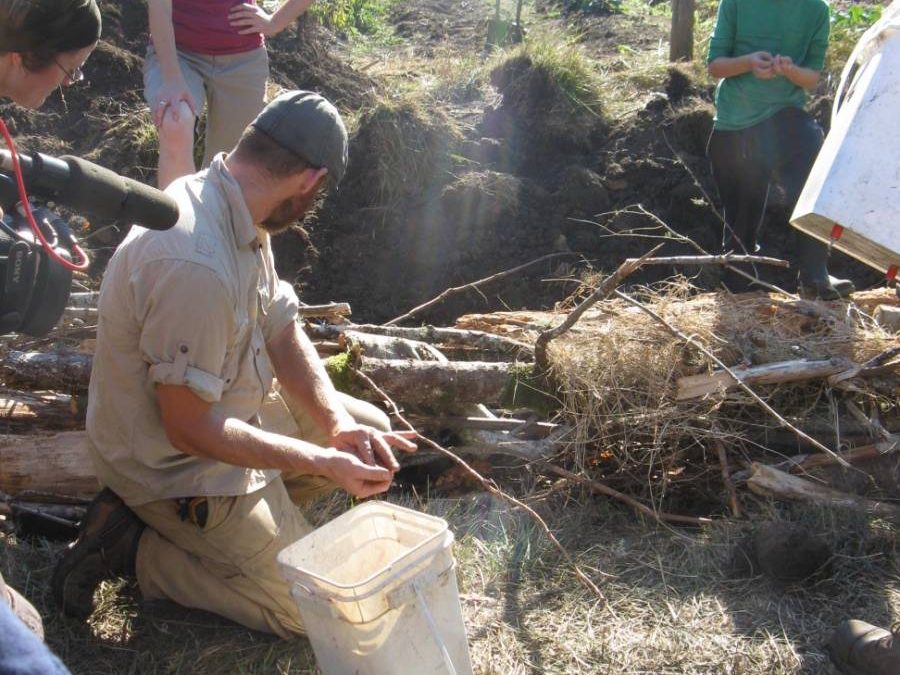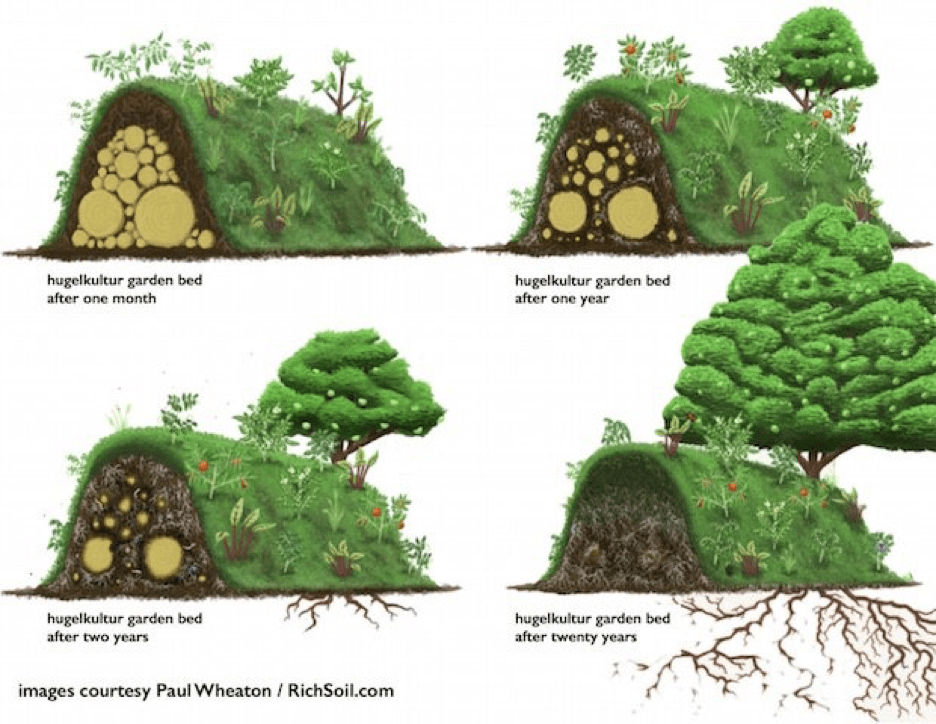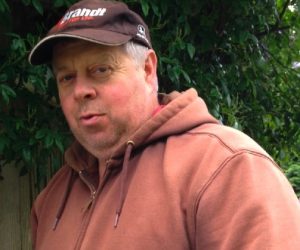Below is a list of the top three landscape practices which I regularly see both homeowners and landscape professionals undertaking. These may seem pretty harmless, but in my opinion, they all have negative consequences for your landscape.
- Raking out all debris or leave litter (fall leaves) from planting areas or beds. Why is this bad? Think of it this way, the soil beneath our feet and in our gardens is full of life, most of which we know very little about. We know this: all nutrients required by your plants are acquired through a complex relationship between the plant roots tips and the surrounding bacteria and fungal organisms. The plants provide the bacteria and fungi food that attracts them to the plant’s roots zone. Here predators consume them and excrete surplus nutrients during the process. It’s these available plant nutrients which the plant will consume. So long story short, nurture your soil and treat it with the greatest respect. One of the best ways we can do this is by covering it with organic matter and ensuring something is living in it at all times. This organic matter provides smaller organisms with a habitat and a food source. Eventually, this organic matter is consumed by organisms and breaks down to be part of the topsoil layer. If you have leaf litter or debris on a planting area, consider yourself lucky and feed your soil.
- Raking leaves off your lawn, putting them in bags for disposal or worst, burning. No surprise here. We know that organic matter or leaves are a huge benefit in the landscape. We also know that you don’t want to leave them on your lawn all winter, as they can damage your turf. Feel free to rake them up (no leaf blowers, please) and place them, as is, around your trees, shrubs or perennials. You’ll be building soil and helping your lawn at the same time. If we consider burning or disposing of any leaves, we miss out on the opportunity to encourage more soil organisms in our garden. A diverse soil food web equals a vibrant garden. If you doubt, observe any undisturbed natural area in a wet riparian area or old forest where the soil food web is stable and well established.
- Burning woody debris or leaves. By now, you can get a sense that some elements within your landscape have more value than was once assumed. Leafs, twigs, any woody debris is potential food for soil organisms, and as we now know, soil organisms are responsible for delivering plant-available nutrients. The diversity and quantity of these organisms play a huge role in your landscape’s health, so why are we so quick to remove these from our landscapes? In part, we have been conditioned, we see images of landscapes that we are influenced by, but in reality, the best landscapes are those which nature designs and builds. So let’s take a moment and observe how nature or our ecosystems will best function and steer our landscapes in this direction. Ecologically abundant and aesthetically pleasing landscapes are easy to achieve. Here are a couple of ideas of what you can do with those branches, woody debris or leaves you have.
- Hugelkulture- Wikipedias definition, Hügelkultur (German pronunciation: [ˈhyːɡl̩kʊlˌtuːɐ̯]) is a horticultural technique where a mound constructed from decaying wood debris and other compostable biomass plant materials is later (or immediately) planted as a raised bed. Adopted by permaculture advocates, it is suggested the technique helps to improve soil fertility, water retention, and soil warming, thus benefiting plants grown on or near such
- Chip or shred your woody debris or branches, then either apply them directly to your planting areas or leave them in a mound where they can passively compost over time. We will take 4-5-year-old wood chips at our residence, screen them, and use it as a potting mix in our greenhouse. We often use woodchips for the pathways between our vegetable garden. These wood chips break down over time and create a fungal dominant layer of compost, which affects your annual vegetables.
We have an abundance of resources around us that can benefit our landscape and the ecosystem within our property boundaries. Before you rake, burn or dispose of any of your woody debris, think of the various uses this could have in your landscape.
Jamie Wallace
Co-owner of Jaan Designs
Regenerative land designer, contractor and educator




